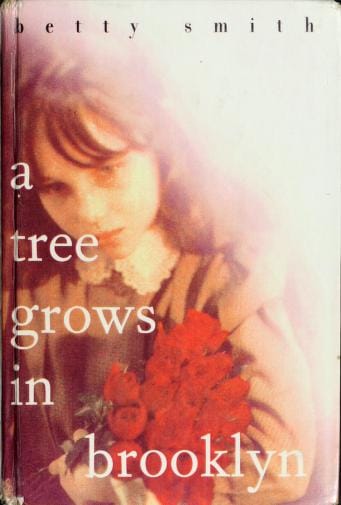Why "A Tree Grows in Brooklyn" Still Resonates
Explore Betty Smith’s 'A Tree Grows in Brooklyn'—its plot, themes of resilience, historical backdrop, and lasting legacy that keeps readers captivated today.

Introduction
A Tree Grows in Brooklyn, published in 1943 by Betty Smith, is often labeled a coming-of-age novel, yet its richness transcends that single category. Set in the tenements of Williamsburg at the turn of the twentieth century, the book chronicles the daily struggles and quiet triumphs of the Nolan family. More than eighty years after its debut, the novel still captures new generations of readers with its honest portrayal of poverty, resilience, and hope.
Plot Overview
The story centers on Francie Nolan, an imaginative girl who spends her childhood collecting scraps for money, reading voraciously at the library, and dreaming of a life beyond her Brooklyn block. Over five distinct years, we follow Francie as she navigates harsh realities—her father’s alcoholism, her mother’s exhausting labor, and the social stigma attached to being poor. While the plot is episodic, each scene builds toward Francie’s realization that education and perseverance are her tickets to a better future.
Main Characters
Francie Nolan
Francie’s wide-eyed curiosity and acute sensitivity make her one of literature’s most memorable young narrators. She observes everything—the smells of stale beer wafting from saloons, the rhythm of peddlers in the street, and the private sorrows adults hide. Her ability to turn hardship into raw material for imagination forms the emotional core of A Tree Grows in Brooklyn.
Katie Nolan
Francie’s mother, Katie, is the family’s anchor. Practical to a fault, she scrubs floors and stretches pennies in a constant battle against hunger. Though her love is stern and often misunderstood, Katie embodies the theme that quiet endurance can be heroic. She plants the metaphorical seed from which the family’s "tree" of hope grows.
Johnny Nolan
Johnny, the singing waiter with a romantic soul, is as charming as he is unreliable. His struggles with alcoholism illustrate the destructive allure of escapism. Despite his flaws, Johnny instills in Francie a belief in beauty and possibility, leaving a complex legacy that fuses disappointment with inspiration.
Key Themes
Betty Smith weaves multiple themes that collectively explain the novel’s enduring popularity. Chief among them are resilience, the quest for education, and the tension between dreams and reality. Each theme is grounded in vivid, everyday details that make the hardships of early twentieth-century life feel personal and immediate.
Poverty and the American Dream
A Tree Grows in Brooklyn does not romanticize poverty; it depicts the humiliations of charity lines and the exhausting arithmetic of survival. Yet Smith contrasts deprivation with the American Dream, suggesting that ambition can germinate in the rockiest soil. The novel challenges the reader to consider how social systems hinder or help those striving to rise.
Education as Empowerment
For Francie, books are more than entertainment; they are lifelines. She checks out a book a day, proving that intellectual hunger can outmatch physical hunger. Smith presents education as the most reliable ladder out of poverty, a viewpoint that feels as urgent today as when the novel first appeared.
Historical and Cultural Context
The Williamsburg of the novel predates the hipster coffee shops of modern Brooklyn. At the turn of the century, the neighborhood was a melting pot of Irish, Jewish, Italian, and German immigrants, all chasing better lives. Smith’s painstaking descriptions of trolley rides, tin can collections, and Saturday night baths double as a social document, preserving details that historians might otherwise overlook.
Literary Style and Symbolism
Smith’s prose is deceptively simple, relying on sensory detail to evoke mood. The recurring image of the Tree of Heaven, a plant that thrives in the poorest soil, symbolizes the Nolans’ tenacity. This single symbol threads its way through the narrative, reinforcing the idea that beauty and growth can flourish in unlikely places.
Why the Novel Still Matters
Modern readers continue to find solace and motivation in Francie’s journey. Issues of income inequality, access to quality education, and gender expectations remain unresolved, giving the book contemporary relevance. Its candid look at working-class life serves as a reminder that personal stories can illuminate broader social truths.
Adaptations and Legacy
The novel’s impact extends beyond the page. A 1945 film adaptation earned critical acclaim, and the book frequently appears on school reading lists worldwide. Authors from Maya Angelou to Jacqueline Woodson cite A Tree Grows in Brooklyn as an influence, underscoring its role in shaping narratives about girlhood and perseverance.
Conclusion
A Tree Grows in Brooklyn endures because it balances stark realism with undiluted hope. Betty Smith invites readers to witness life’s injustices while refusing to succumb to despair. In doing so, she crafts a story that feels both historically specific and universally resonant, ensuring that Francie Nolan’s voice will continue to echo through the streets of Brooklyn—and the halls of literature—for generations to come.



